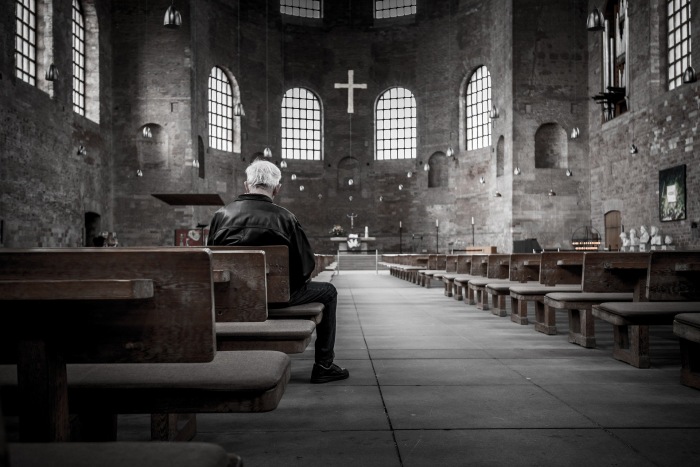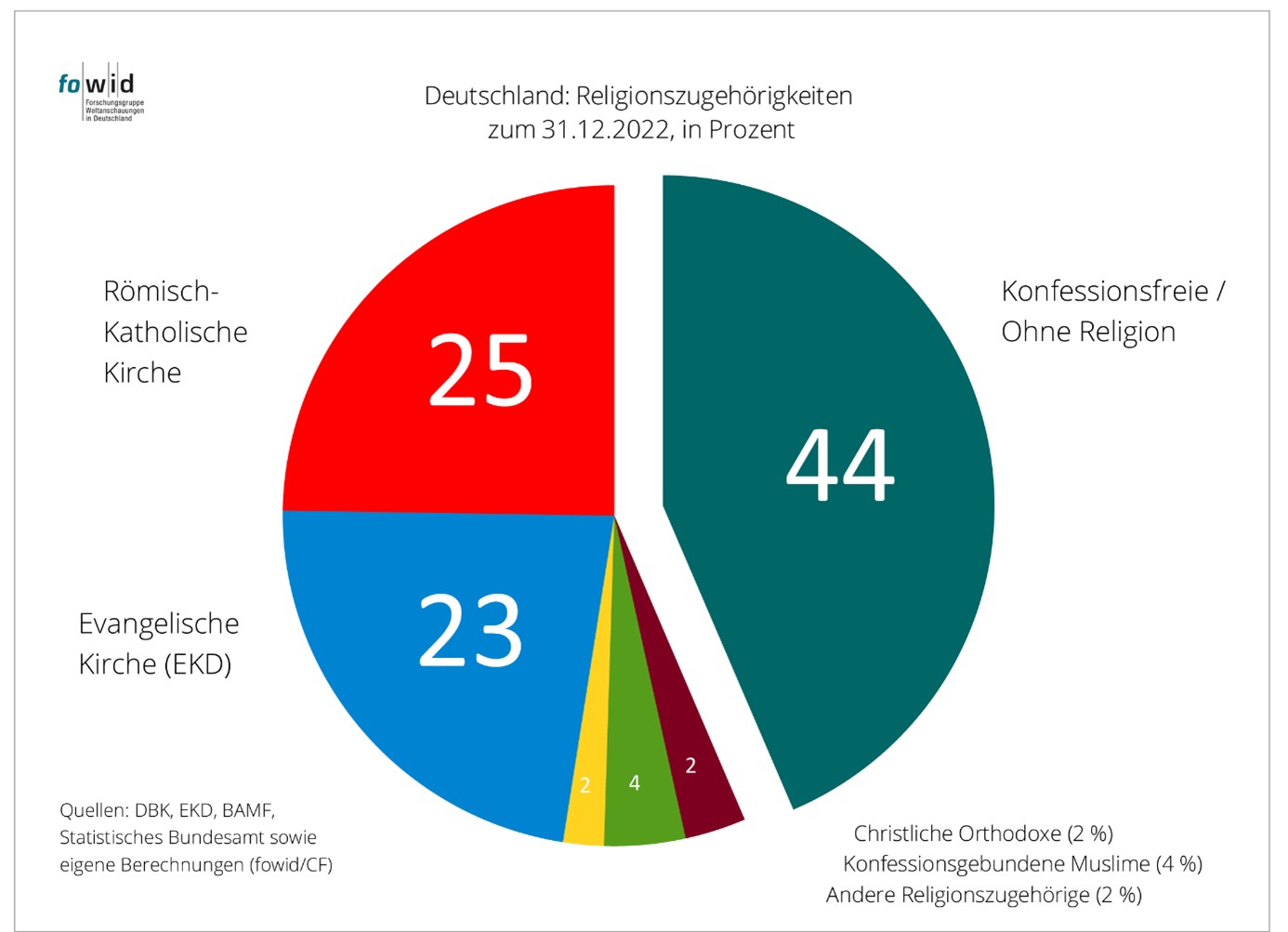The Erosion of Faith Continues
fowid publishes analysis on the religious distribution in Germany

church-768613_1920_pixabay.jpg
Free-Photos@pixabay.com
Only 48% of Germans were still members of one of the two mainstream Christian churches in 2022, while the proportion of non-denominational people has risen to 44%. This is according to data published today by the Research Group on Worldviews in Germany (fowid). The strength of the trend towards secularization is also reflected in the fact that only 6 percent of the population still practice their faith.
It is not easy to determine the exact distribution of religions and non-religious worldviews in Germany. It is "a mixture of relatively precise data and estimates of various qualities", explains fowid director Carsten Frerk regarding the latest analysis, which was published today on the website of the Research Group on Worldviews in Germany (Forschungsgruppe Weltanschauungen in Deutschland, fowid). A particular challenge in 2022 was "the large number of immigrants from Ukraine, whose religious affiliations can only be assumed with reference to the conditions in Ukraine," says Frerk: "With regard to the number of members of the organizations within the Orthodox 'faith family', the information is quite diverse, so it took a special effort to gain some clarity."
After comparing various studies, fowid arrived at the following overview of the religious and ideological distribution in Germany: at the end of 2022, Roman Catholics made up 24.8 percent of the population, Protestants 22.6 percent, Muslims 3.7 percent, other religious communities 5.1 percent and the non-denominational 43.8 percent. According to these figures, the two major Christian churches lost 1,333,400 members last year – more than ever before. The reason for this is not only the increased number of people leaving the church, but also the preponderance of deaths, with a third of deceased church members foregoing a church funeral, which Frerk describes as "silent resignation".

Fewer and fewer practising believers
In its analysis, the Research Group also examined the question of how many of the nominal religious members actually practise their faith in public. One indicator of this is "’regular’ attendance at a church service, at least once a month." For 2019, this figure was 7.9 percent. This already very low proportion of "practising believers" fell again in 2022.
According to fowid, only 6.2 percent of the population (and of all religions) can still be considered "practising believers". This continues a long-term trend: in 2016, a study of the ALLBUS evaluations on "Church attendance frequency in Germany 1980-2016" cited a proportion of believers with "regular church attendance" of 12 percent, in 2019 it was only 7.9 percent, which has now fallen again by a further 1.6 percentage points. The Research Group sums up this result as follows: "Out of 100 German citizens, 94 no longer attend religious services, and only 6 of them regularly attend a church, synagogue or mosque. Few other statistical indicators show quite so clearly how far the erosion of faith has already progressed."
